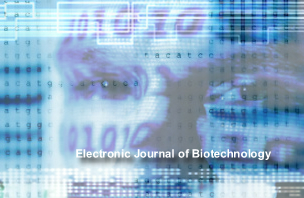
|
Electronic Journal of Biotechnology
Universidad Católica de Valparaíso
ISSN: 0717-3458
Vol. 18, No. 4, 2015, pp. 286-290
|
 Bioline Code: ej15046
Bioline Code: ej15046
Full paper language: English
Document type: Research Article
Document available free of charge
|
|
|
Electronic Journal of Biotechnology, Vol. 18, No. 4, 2015, pp. 286-290
| en |
Effects of aroma quality on the biotransformation of natural 2-phenylethanol produced using ascorbic acid
Tian, Xun; Ye, Rui; Wang, Jingwen; Chen, Yifei; Cai, Baoguo; Guan, Shimin; Rong, Shaofeng & Li, Qianqian
Abstract
Background: Natural 2-phenylethanol (2-PE) is an important flavoring that emits the aroma of roses. During
biotransformation, the aroma quality of natural 2-PE is affected by its main by-products, which include
butanol, isobutyric acid, butyric acid, and isovaleric acid. Thus, controlling undesirable by-product formation
can reduce the effect of odor on 2-PE aroma quality.
Results: 2-PE was produced through biotransformation using L-phenylalanine as a substrate and glucose as a
carbon source. Ascorbic acid was added to the system to improve the redox reaction and suppress the
generation of by-products. Principal component analysis of the aroma quality of 2-PE was performed using an
electronic nose. Similarity analysis revealed that the effects of four by-products on 2-PE aroma quality may be
ranked in the following order: isovaleric acid < butyric acid < isobutyric acid < butanol. The sample that
exhibited the best similarity to the standard 2-PE sample (99.19%) was the sample to which ascorbic acid had
been added during glucose metabolism.
Conclusions: 2-PE produced through the addition of ascorbic acid exhibited the closest aroma similarity to the
standard 2-PE sample.
Keywords
Aroma quality; Ascorbic acid; Biotransformation; By-products; 2-Phenylethanol
|
| |
© Copyright 2015 - Electronic Journal of Biotechnology
Alternative site location: http://www.ejbiotechnology.info
|
|
